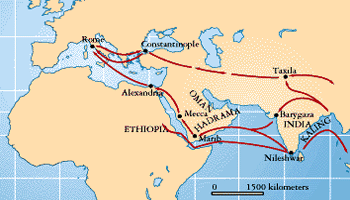Mediterranean
Though there was contact between India and the Mediterranean in ancient times, the timing of the association of the word "adamas" with diamond is difficult to establish. The presence of diamond in Rome by about 100 CE is well-known by the writings of Pliny the Elder (23--79 CE), by sapphire engravings, and by talismanic diamond rings.
Hesiod, a Greek poet of the 8th century BCE, mentions adamas but obviously refers to iron, with its "unbreakable quality." Theophrastus (c. 372--322 BCE), a student of Plato and author of "De lapidibus" ("On Stones"), actually uses adamas to refer to emery, a rock containing corundum, the next hardest mineral.
Pliny the Elder, who died during an eruption of Mount Vesuvius, wrote the encyclopedia "Historia naturalis," a basic source of classical information. He states: "The substance that possesses the best value, not only among precious stones, but of all human possessions, is adamas; a mineral which for a long time, was known to kings only, and to very few of them...These stones [diamonds] are tested upon the anvil, and will resist the blow to such an extent as to make the iron rebound and the very anvil split asunder." The idea of diamonds being known to kings only is Indian in origin; the latter wrong description suggests the loss of many diamonds on the anvil. A further Indian legacy follows: "Adamas, too, overcomes and neutralizes poisons, dispels delirium, and banishes the baseless perturbations of the mind."
Pliny also discussed diamond fragments: "These particles are held in huge request by engravers, who enclose them in iron, and are enabled thereby, with the greatest facility, to cut the very hardest substances known." Roman engraved sapphires, cameos, and intaglios from the first century are certainly the product of diamond engraving points.
Remarkably, early Chinese references to diamond cite its coming from Rome in iron scribes. Chinese interest in diamond was severely as an engraving or carving tool, primarily for jade, or as a drill for beads and pearls.

Diamonds were traded out of India by both sea and land routes. Classical stories of sources in Ethiopia and the legend of the Valley of Diamonds may have originated from the indirect trade routes and from attempts to mask the ultimate source of diamonds, India. For centuries after, rulers of the principal lands also kept finer diamonds from being carried across their territories, thus diminishing the quantities of diamonds that could reach the Mediterranean region.
<< Back | Next >>